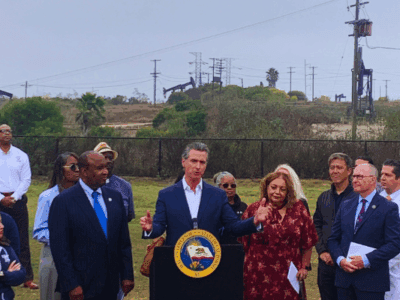11th Circuit stirs the NPDES pot

Cross posted at CPRBlog.
In a decision that shows the power of Chevron deference, Friends of the Everglades v. South Florida Water Management District, the 11th Circuit has upheld EPA’s water transfers rule, which provides that the act of moving water from one waterway to another does not require a National Pollutant Discharge Elimination System permit under the Clean Water Act. The question of whether water transfers are subject to CWA permitting has been litigated several places, but most fiercely in the Everglades, where the Corps of Engineers’ Central and South Florida Project moves lots of water, containing lots of pollutants, in directions it would not otherwise go.
The CWA requires a permit for “any addition of any pollutant to navigable waters from any point source.” The question in the Everglades cases is whether the transfer of polluted water from one waterway to another qualifies as an “addition” of the pollutants to the receiving water. The answer matters because enormous pumps move water from canals which collect agricultural and municipal wastewater that, as the court put it in this case, “contain[s] a loathsome concoction of chemical contaminants,” into the relatively pristine Lake Okeechobee, a backup drinking water source, and the Everglades, where native ecosystems are highly sensitive to nutrient pollution.In a related case, Miccosukee Tribe v. South Florida Water Management District, the 11th Circuit held in 2002 that a different C&SF Project pump required an NPDES permit. The Supreme Court remanded for more factual development, stating that if the source and receiving waters are not “meaningfully distinct,” no permit would be required. Proceedings in that remanded case have been on hold while the permit issue was being litigated in this one.
The District Court concluded, based on detailed factual findings, that Lake Okeechobee is meaningfully distinct from the canals from which water is pumped into it. It went on to rule that the pumps could not lawfully operate without an NPDES permit because the Clean Water Act unambiguously requires a permit for any addition of a pollutant to navigable waters, even from other navigable waters. The First and Second Circuits have also held that transfers of polluted waters require permits, and the Supreme Court dropped some strong hints to that effect in the Miccosukee opinion.
The 11th Circuit is the first to rule otherwise, basing its decision on the water transfers rule, which took effect last June.
In sum, all of the existing precedent and the statements in our own vacated decision are against the unitary waters theory. That precedent and those statements take the view that the transfer of pollutants from one meaningfully distinct navigable body of water to another is an “addition . . . to navigable waters”
for Clean Water Act permitting purposes. If nothing had changed, we might make it unanimous. But there has been a change. An important one. Under its regulatory authority, the EPA has recently issued a regulation adopting a final rule specifically addressing this very question.
The court concluded that the rule was entitled to Chevron deference because the statute is ambiguous and EPA’s interpretation is reasonable
It’s difficult to argue that the statute is not, in fact, ambiguous, given the heated disagreements over at least the past ten years over its meaning. But the 11th Circuit’s treatment of the second Chevron question, whether the agency’s interpretation is reasonable, leaves much to be desired. After spending many pages parsing the statute’s language to see if it harbors ambiguity, the court skipped over the reasonableness step in just a page and a half. It essentially eliminated that step as a distinct hurdle for the agency to get past, concluding that EPA’s interpretation was reasonable because the language could support it. That can’t be enough. To be reasonable for Chevron purposes, an agency’s interpretation must not only be linguistically permissible but consistent with the goals and structure of the statute in question. It must fit within the boundaries set by Congress.
Whether the water transfers rule is a reasonable construction of the Clean Water Act or not is not a trivial question. As the 11th Circuit noted in parsing the language in its “step one” analysis, the rule is inconsistent with the CWA’s broad goals of restoring and maintaining the integrity of the nation’s waters. On the other hand, it might seem to undermine the distinction the Act clearly draws between point sources (regulated) and non-pointed sources (not regulated). That’s where the 11th Circuit’s analysis ends, suggesting that any time multiple interpretations of a statutes are facially plausible, the implementing agency has a great deal of discretion to choose. A closer examination is warranted. The court should have examined the Supreme Court’s statements in Miccosukee Tribe that several sections of the CWA make the “unitary waters” interpretation implausible. It should have looked at the reasons for drawing a strong regulatory distinction between point and non-point sources and asked which side of that conceptual line the Everglades pumps fall on. (I’m personally partial to Judge Oakes’ dissent in Plaza Health v. U.S., 3 F.3d 643 (2d Cir. 1993) on that score.) It should at least have closely examined the agency’s explanation of why the rule is consistent with the statute.
EarthJustice plans to file for rehearing en banc. Meanwhile, the ball is now in EPA’s court. Even if EPA can maintain the water transfers rule, it is certainly not required to do so.







Reader Comments